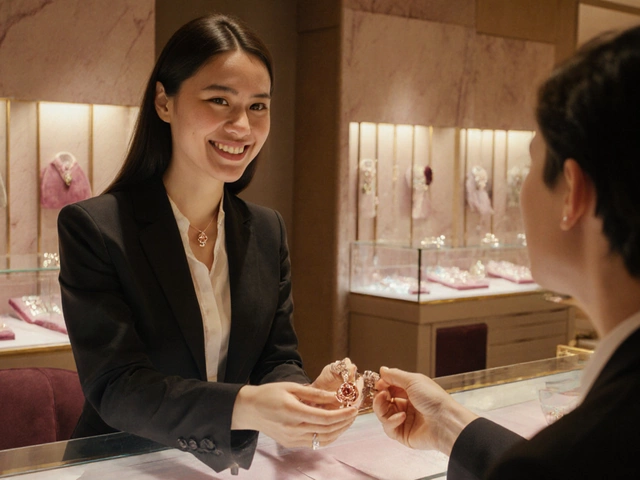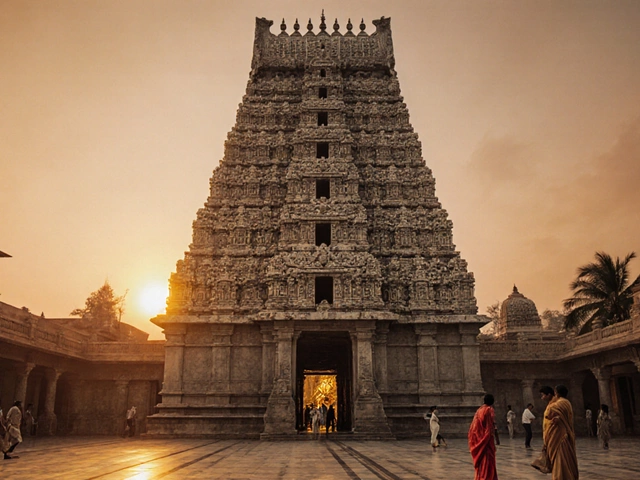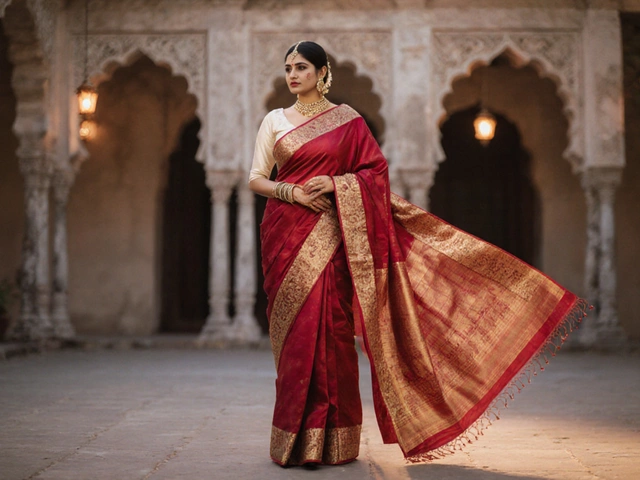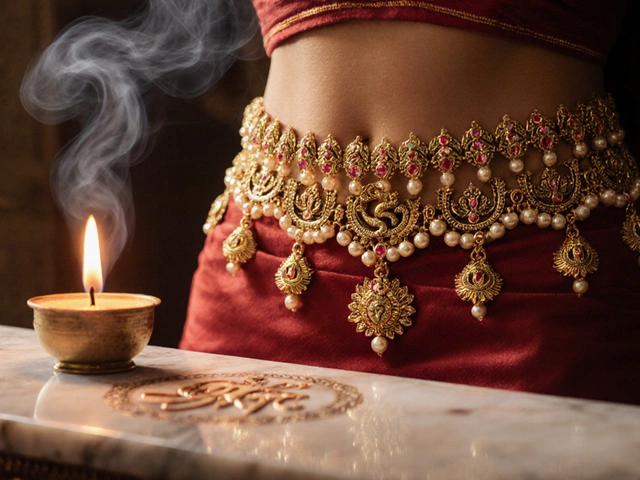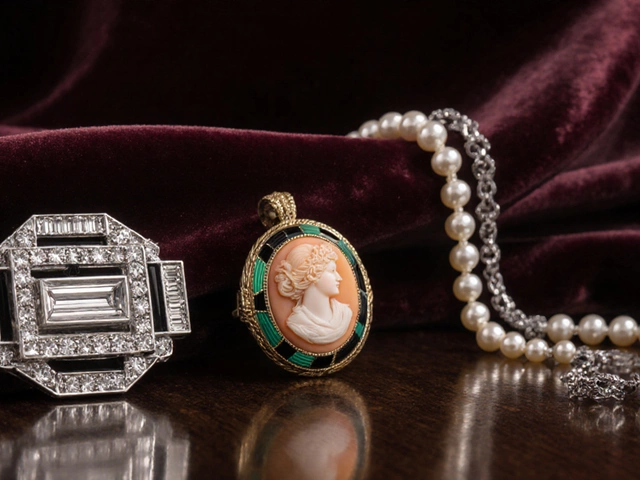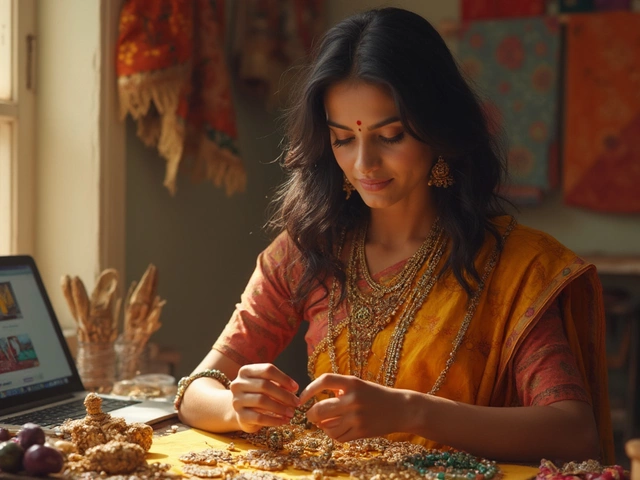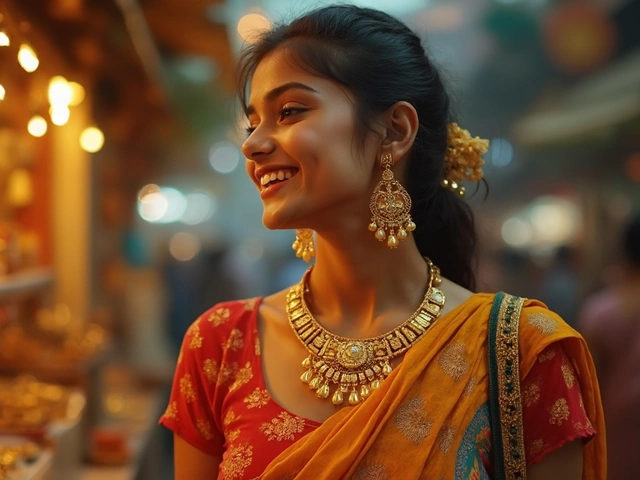Embroidery: The Heartbeat of Indian Style
When talking about embroidery, a needle‑and‑thread technique that adds decorative stitching to fabric. Also known as stitch work, it turns simple cloth into eye‑catching art. Embroidery often shows up on Traditional Indian Dress, garments like sarees, salwar suits and lehengas that reflect regional culture and pairs nicely with Handcrafted Jewelry, pieces such as kamarbands, bangles and necklaces made by skilled artisans. These three entities share a love for detail, heritage and the stories they tell.
How Embroidery Connects to Patterns, Crafts and Everyday Wear
Embroidery encompasses Regional Textile Patterns, motifs like paisleys, flowers and geometric shapes that differ from Gujarat to Tamil Nadu. Each pattern reflects local myths, climate and available dyes. Because of that, embroidery requires skilled craftsmanship, steady hands, knowledge of stitch types and an eye for colour balance. When a craftsman layers a motif on a silk saree, the result isn’t just decoration; it’s a visual map of the region’s history. Traditional Indian dress often features embroidery that matches the wearer’s occasion – a bright mirror‑work design for a wedding, subtle thread work for a daily office look. The same attention to detail appears in handcrafted jewelry: a waist chain may carry tiny enamel beads that echo the saree’s border stitches. This overlap means you can mix and match without clashing – the embroidery guides the jewelry choice, and vice‑versa. If you’re a traveler, knowing a bit about embroidery helps you dress respectfully. Tourists who wear a simple cotton kurta with minimal stitching blend in better than someone in a heavily embroidered outfit that belongs to a ceremony. Likewise, the right colour palette – often dictated by the embroidery’s thread – can keep you comfortable in different climates across India. Beyond aesthetics, embroidery influences the value of clothing and accessories. A hand‑embroidered piece fetches higher price because of the time spent – sometimes dozens of hours for a single panel. That investment signals quality and often means the item will last longer, resisting wear better than mass‑produced prints. Modern designers are reviving age‑old stitches, mixing them with contemporary cuts. You’ll see a denim jacket with traditional Kantha work, or a silk blouse paired with a minimalist gold bangle. This blend shows how embroidery isn’t stuck in the past; it adapts and stays relevant. All of this points to a simple truth: embroidery stitches together fabric, jewellery, culture and personal style. Below you’ll find deeper dives into how tourists dress in India, the meaning behind waist chains, colour tips for gold jewelry, and many more practical guides that build on the basics introduced here.
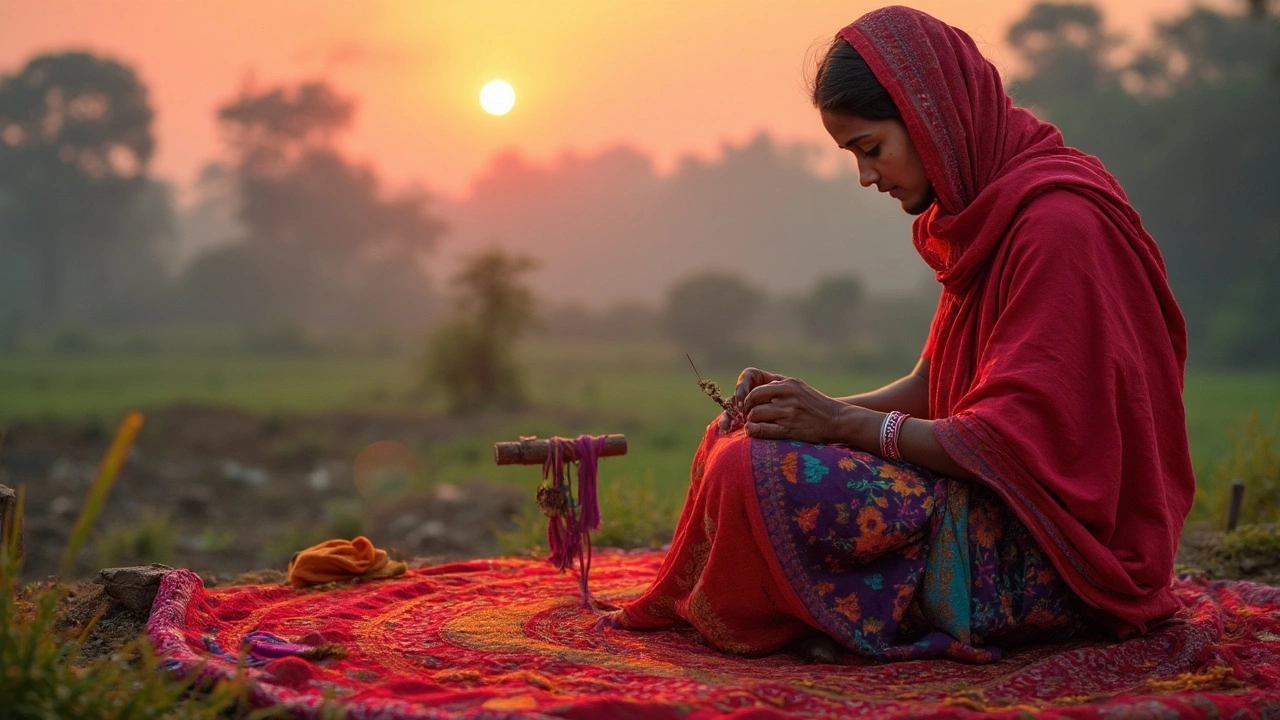
Discovering the Unique World of Sujni and Kantha Stitches
Sujni and Kantha are traditional Indian stitches with deep cultural roots and unique characteristics. Both styles bring together art, history, and fashion, offering intricate designs that adorn textiles in different parts of the country. Understanding their origins and applications can elevate your appreciation for these crafts and inspire the creative use of these techniques in modern fashion.
read more